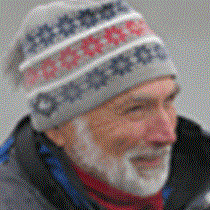LeConte Glacier and Petersburg
Dawn broke bright and clear, and we were soon passing into LeConte Bay. The Sea Lion cruised through the pastel turquoise water past large, blue icebergs and smaller white chunks of ice. Towering walls of granite over 3,000 high closed in as we wound left and right. The fiord ended in a broken mass of white pinnacles. This was the LeConte Glacier. Roars and cracks could be heard from within. At one point, to our bewilderment, the water suddenly began to rise above the surface. A large piece of ice broke off from below and erupted upwards. These are called shooters and always add excitement to a viewing experience. Later we were watching the face when a large section began to descend. The sound didn’t reach us for a few moments. Then the piece roared and fractured into a thousand pieces. The sea seemed to suck it up as it dropped. It generated a wave that rose higher and higher and began to move towards us. It was so steep that the top began to break into whitewater. As it rolled outward it quickly lost much of its size and force, so that by the time it reached us, it rocked the ship only gently. The photograph shows the LeConte Glacier with its array of seracs or ice pinnacles on the surface. These form when crevasses crack the ice surface in two directions. A large blue iceberg floats in the foreground.
We not only had a chance to explore the fiord by ship but were soon in Zodiac’s for a closer view. One memorable waterfall tumbled downward in a staircase of cascades. The last one shot up in a waterwheel, producing dramatic backlit spray. We also viewed icebergs up close and played with smaller pieces of ice.
Activities in the fishing town of Petersburg filled our afternoon. The helicopter and float plane trips had superb weather for flight seeing. The complexity of the landscape, the vast extent of the Stikine Icefield, and the paths glaciers once took can best be appreciated from the air. These were flights that held beauty never to be forgotten. Although most people don’t come to Southeast Alaska for the bogs, they were also marvelous. Boardwalks made these areas accessible so we could easily see these specialized acid-loving mosses, twisted and stunted shore pines, and carnivorous sundews.
Dawn broke bright and clear, and we were soon passing into LeConte Bay. The Sea Lion cruised through the pastel turquoise water past large, blue icebergs and smaller white chunks of ice. Towering walls of granite over 3,000 high closed in as we wound left and right. The fiord ended in a broken mass of white pinnacles. This was the LeConte Glacier. Roars and cracks could be heard from within. At one point, to our bewilderment, the water suddenly began to rise above the surface. A large piece of ice broke off from below and erupted upwards. These are called shooters and always add excitement to a viewing experience. Later we were watching the face when a large section began to descend. The sound didn’t reach us for a few moments. Then the piece roared and fractured into a thousand pieces. The sea seemed to suck it up as it dropped. It generated a wave that rose higher and higher and began to move towards us. It was so steep that the top began to break into whitewater. As it rolled outward it quickly lost much of its size and force, so that by the time it reached us, it rocked the ship only gently. The photograph shows the LeConte Glacier with its array of seracs or ice pinnacles on the surface. These form when crevasses crack the ice surface in two directions. A large blue iceberg floats in the foreground.
We not only had a chance to explore the fiord by ship but were soon in Zodiac’s for a closer view. One memorable waterfall tumbled downward in a staircase of cascades. The last one shot up in a waterwheel, producing dramatic backlit spray. We also viewed icebergs up close and played with smaller pieces of ice.
Activities in the fishing town of Petersburg filled our afternoon. The helicopter and float plane trips had superb weather for flight seeing. The complexity of the landscape, the vast extent of the Stikine Icefield, and the paths glaciers once took can best be appreciated from the air. These were flights that held beauty never to be forgotten. Although most people don’t come to Southeast Alaska for the bogs, they were also marvelous. Boardwalks made these areas accessible so we could easily see these specialized acid-loving mosses, twisted and stunted shore pines, and carnivorous sundews.




